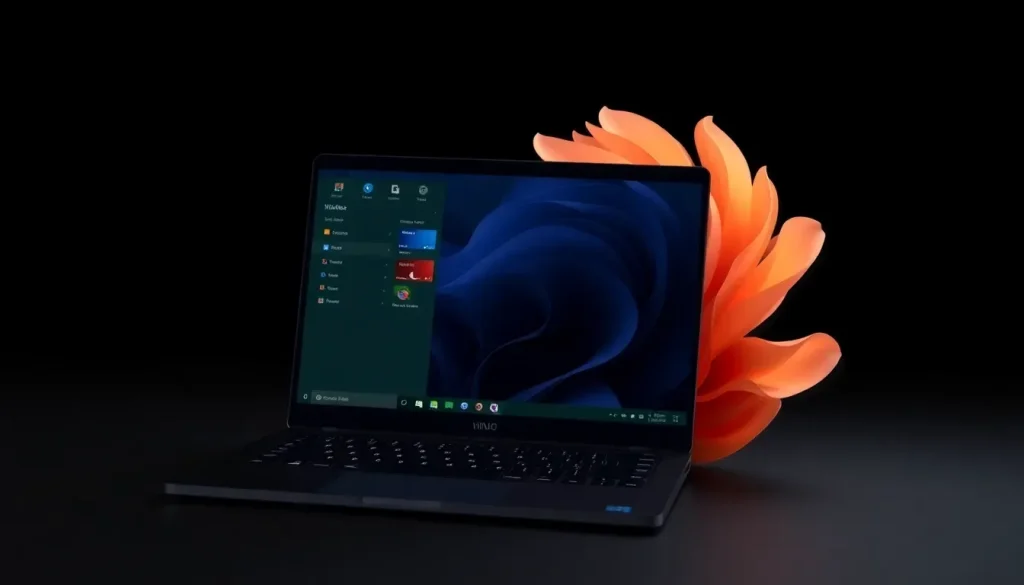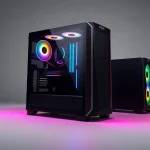Windows 11 update arrives faster and more compact

For anyone who has used a Windows PC, the routine of shutting down after a long day often comes with an irritating catch: the dreaded update prompt. You click ‘shut down’ only to be confronted with the choice of updating and restarting or shutting down directly. This often leads to an extended wait, making you settle in again, knowing you’re in for a lengthy process. However, the latest Windows update offers a glimmer of hope for faster and more efficient updates.
As we transition into autumn, Microsoft typically rolls out its significant yearly updates, and this year is no exception. The latest version of Windows 11, designated as 25H2, was officially announced on September 30th. This iteration focuses on a more compact install that promises quicker rollouts. Thus, users can expect less time spent waiting for updates and just one restart before accessing the new features and improvements.
What’s New in Windows 11 25H2 Update?
The 25H2 update brings a variety of enhancements aimed at improving security and user experience. Among the notable features introduced are:
- AI-Assisted Secure Coding: A feature designed to bolster the security of applications by assisting developers in writing safer code.
- Wi-Fi 7 Support: This update introduces support for the latest Wi-Fi standard, promising improved connectivity and faster speeds.
- Quick Machine Recovery: A new feature that facilitates rapid recovery from boot issues, minimizing downtime.
- Task Manager Enhancements: Users will notice a more responsive Task Manager, especially when closing processes and handling archived files.
These changes not only enhance performance but also streamline user interactions with the operating system, making it more efficient overall.
Performance Improvements and User Experience
This update aims to enhance the overall usability of Windows 11. Improvements to the Task Manager ensure smoother operation when managing processes, while the File Explorer is optimized for quicker access to files and folders. Users can expect:
- Faster extraction of archived files.
- Improved responsiveness when closing applications.
- Enhanced overall system stability.
Such refinements are essential as users increasingly rely on their machines for both work and leisure, requiring a more seamless experience.
Potential Issues with the Update
Despite the array of benefits, the rollout hasn't been without its drawbacks. Some users have reported issues with specific applications, particularly those related to media playback. Problems include:
- Inability to play Blu-ray and DVD content, especially when it involves protected material.
- Application freezes or crashes during playback.
- Black screens when attempting to access certain digital content.
Microsoft is aware of these issues and is actively working on solutions to ensure that users can enjoy a smooth experience with their media applications, reinforcing their commitment to customer satisfaction.
How to Upgrade to Windows 11 25H2
Users can expect a gradual rollout of the 25H2 update across different regions. However, for those eager to experience the new features immediately, a manual update is possible. To do so, users can follow these steps:
- Open the Settings menu on your Windows PC.
- Navigate to Windows Update.
- Click on Check for Updates.
- If the 25H2 update is available, follow the prompts to install it.
For detailed instructions on the update process, you can visit the official Windows Update support page.
Addressing Slow Update Issues
Many users have experienced slow update installations in the past, leading to frustration and reduced productivity. Fortunately, the 25H2 update aims to address these concerns with a more efficient installation process. Improvements include:
- Reduced installation time.
- Less CPU usage during updates.
- Streamlined processes that minimize system resource consumption.
By optimizing the update process, Microsoft hopes to enhance the user experience significantly, making updates a less daunting aspect of using Windows.
Windows 11 on Unsupported Hardware
One of the more contentious topics surrounding Windows 11 is its compatibility with older hardware. Microsoft has set specific hardware requirements that have left many devices unable to upgrade. However, there are workarounds for users who want to install Windows 11 on unsupported machines. These methods can involve:
- Using third-party tools to bypass installation checks.
- Modifying registry settings to allow the installation on older hardware.
- Following guides available online that detail the process.
While these options can provide access to Windows 11 features, users should proceed with caution, as they might encounter stability issues or lack of support.
Conclusion on Windows 11 Updates
With the rollout of the 25H2 update, Microsoft aims to improve the user experience significantly, focusing on speed, efficiency, and security. Users are encouraged to keep their systems updated to take advantage of the new features while being mindful of potential issues that may arise. For a deeper dive into the upgrade process, check out this informative video on upgrading to Windows 11:
As the world of technology evolves, staying informed and prepared will help users navigate the exciting changes that come with each update. With the latest improvements, Windows 11 is more robust than ever, offering a glimpse into the future of computing.




Leave a Reply